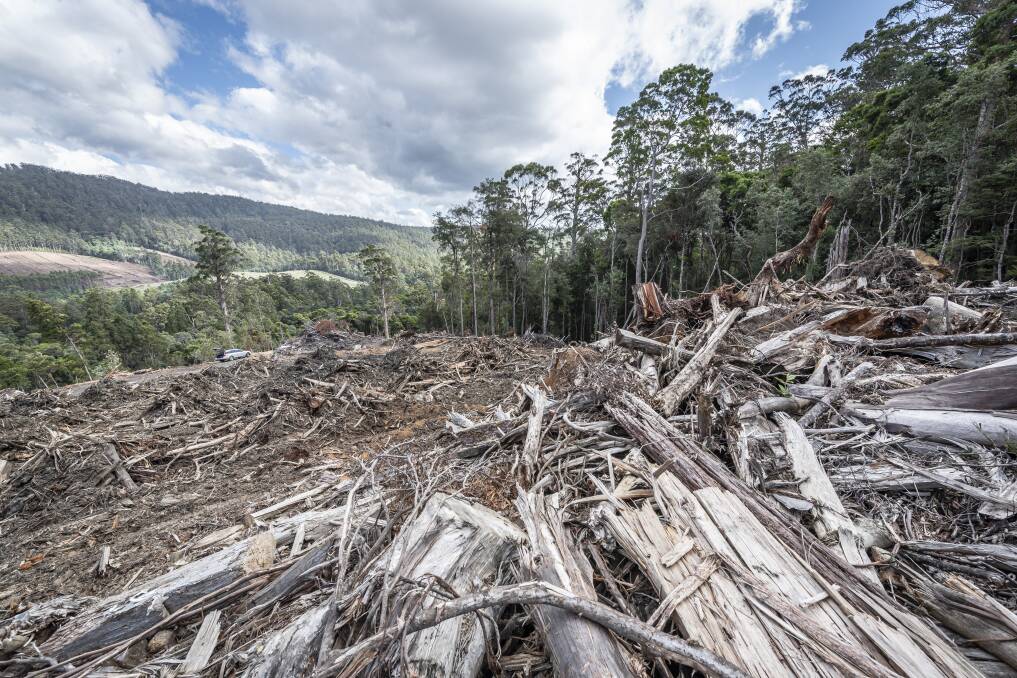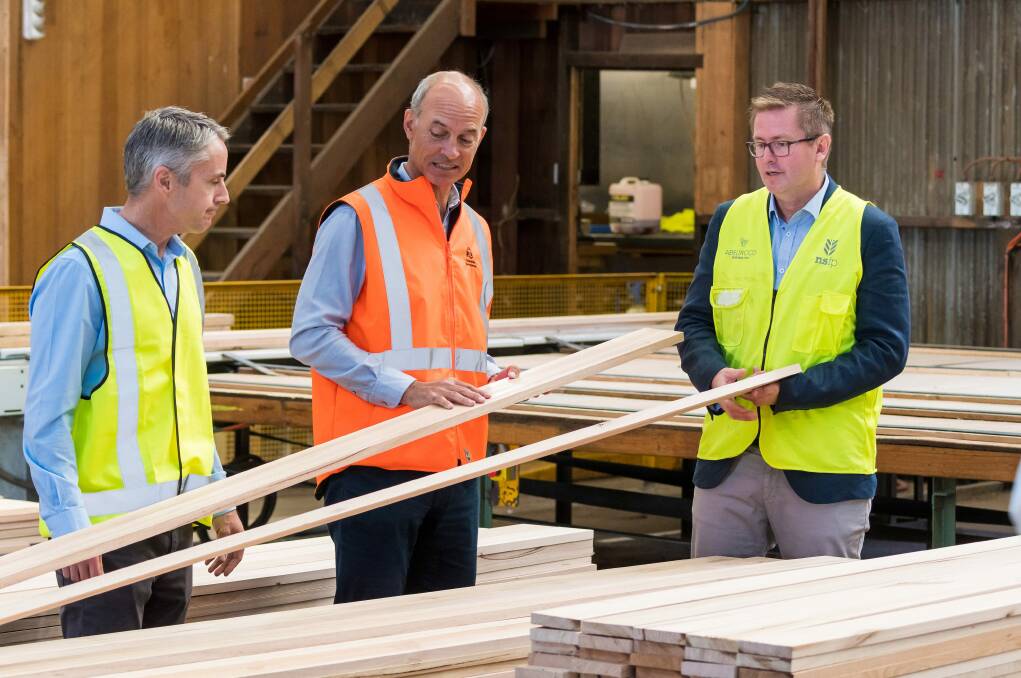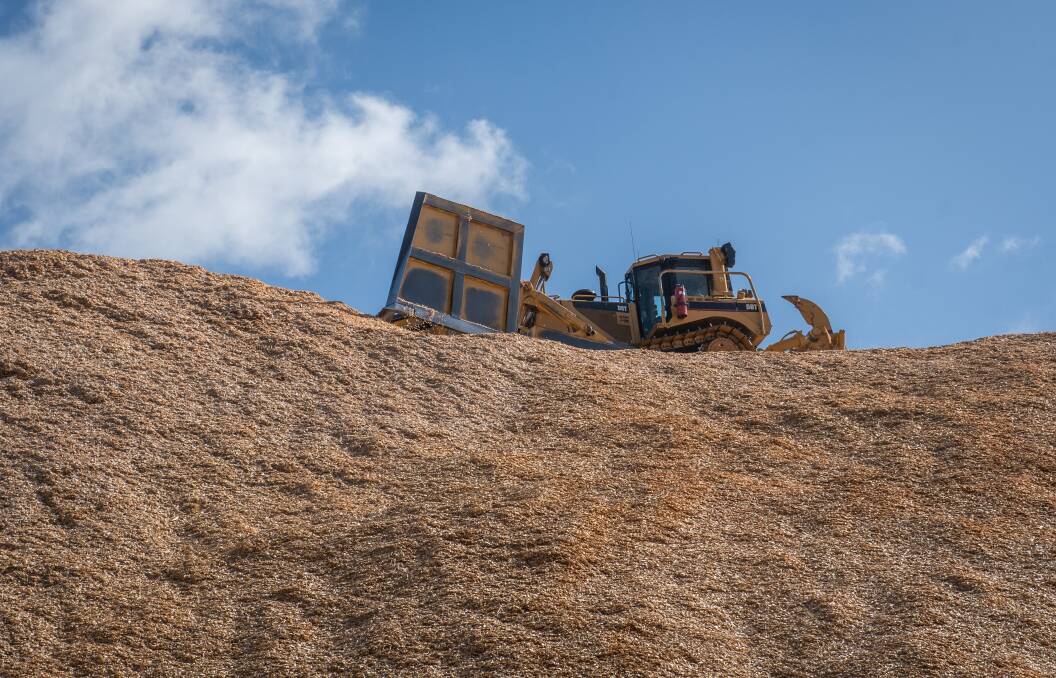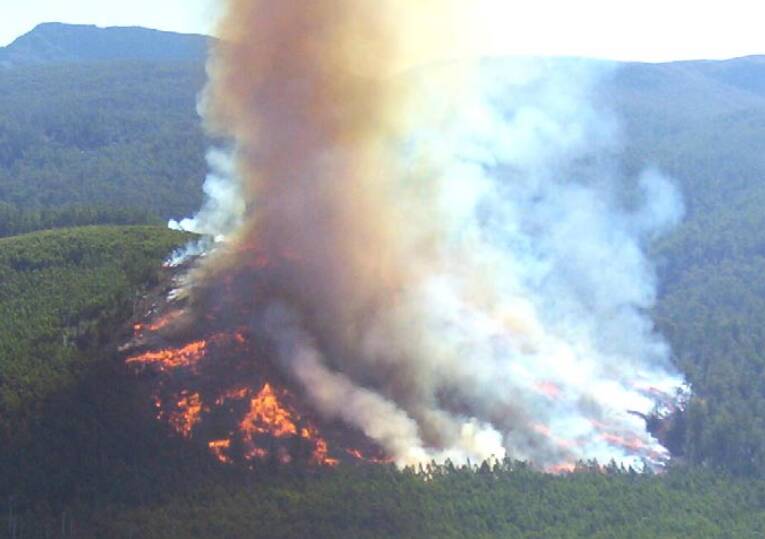
The Tasmanian Government and the forestry industry have continued to claim that the state's native forestry practices are a net-benefit for mitigating climate change, but University of Tasmania bushfire and forest ecologists say it's not that simple.
Subscribe now for unlimited access.
$0/
(min cost $0)
or signup to continue reading
Since the release of the latest Intergovernmental Panel on Climate Change, government ministers have been asked about Tasmania's emissions and forestry practices. They continue to point back to the IPCC as supporting the state's approach.
The government's argument
Resource Minister Guy Barnett cited a 2019 IPCC report in budget estimates this month that stated "sustainable forestry management" can transfer carbon to wood products where it is stored rather than released, and that trees that are actively growing absorb about three-times the carbon compared with old mature trees.
His argument is that because Tasmania replants native forest after it has been harvested - which can include old growth harvesting - that these regrowth forests remove more carbon from the atmosphere than if the forest remained.
"The IPCC report supports the government's approach," Mr Barnett concluded.

Premier Peter Gutwein also cited the IPCC during question time on September 15, and said "sustainable forestry management is part of the solution to climate change, not the opposite".
In his answer, he accused the Tasmanian Greens of "cherry picking the science" from the IPCC.
And in response to Western Australia's decision to phase out native forest harvesting from 2024, the Tasmanian Forest Products Association also went to the IPCC 4th Assessment to back up its claim that native forestry is good for the environment.
NATIVE FOREST HARVESTING: Clearfell, burn and sow, but at what cost?
"A sustainable forest management strategy aimed at maintaining or increasing forest carbon stocks, while producing an annual sustained yield of timber, fibre or energy from the forest, will generate the largest sustained mitigation benefit," the IPCC report stated.
The TPFA claimed that "the world needs more certified, environmentally sustainable forestry and not less". Sustainable Timber Tasmania failed to obtain Forest Stewardship Council certification at its most recent attempt due to ongoing old growth logging and failure to adequately protect swift parrot habitat.
Where does the wood end up?
Two experienced fire and forest ecologists at the University of Tasmania found that this interpretation of climate science was simplistic, and that it relied upon a range of complex assumptions.
The first problem, according to University of Tasmania landscape ecologist Grant Williamson, is that it assumes all of the harvested forest is used for permanent products to store the carbon.
"The best outcome is for native forest products to be used for permanent things like construction timber where you're taking the carbon out and it's staying out," he said.
"My impression is that it's mostly for construction, but there is also woodchips, and woodchips are disposable as things like paper.

"There's no simple answer to this, and it'd require a lot of modelling."
Without comprehensive access to timber supply chains from native forestry, Dr Williamson said it was impossible to know the lifespan of Tasmania's native timber.
In Tasmania, varying degrees of undergrowth burning is carried out post-harvest as a method of increasing soil fertility for regrowth.
This is where another problem occurs regarding carbon emissions from forestry. Dr Williamson said Tasmania would "have to be careful" about how it aims towards true "sustainability".
Climate change will alter assumptions
Regrown native forest is usually harvested after a few decades, meaning it could be until the 2050s before forest harvested today has reached maturity to be harvested again.
University of Tasmania professor of pyrogeography and fire science, David Bowman, said the way forests regrow will change in those decades, altering the way in which they absorb carbon dioxide from the atmosphere.
"With climate change, forests are becoming more vulnerable for two reasons. Firstly, they're more vulnerable to drought," he said.

"Even if the drought doesn't kill the trees, it can substantially slow their regrowth.
"The second problem with climate change and drought is if the forests burn, then they are not actually functioning as a carbon sink. The forests are vulnerable to being reburnt when they're growing, so what gets taken down gets put back up again."
A key assumption from the Tasmanian Government and forestry industry is that regrowing native forest absorbs more carbon than stagnant old growth.
"But old growth also represents an enormous store of standing carbon, and if you harvest it, what happens to the carbon you harvest?" Professor Bowman said.
"The view that it's self-cancelling - that you can chop down and regrow it - that i'ts carbon neutral, is in my view a stretch.
"To say it's carbon positive is a bigger stretch."
Can native forestry continue in a dry, warm climate?
That isn't to say the forest ecologists are entirely opposed to native forest harvesting.
Professor Bowman said practices would need to alter in a climate more prone to drought and bushfire.
"I'm not opposed to forestry, but the forestry that we do has to change to build in greater resilience to sustain being reburnt," he said.
"It has to be multi-age forests. The era of clearfelling, cutting down, replanting, a simple form of silviculture, those days are pretty well numbered."
Sustainable Timber Tasmania has moved more towards practices like aggregated retention - or the retention of clumps of native forest surround by clearfelling - but Professor Bowman said "thinning" was the better way to go for the future.
"Forests do regrow, but the issue is that now everything has become time-critical," he said.
"The amount of time we've got is shrinking because of climate change."
What do you think? Send us a letter to the editor:
Our journalists work hard to provide local, up-to-date news to the community. This is how you can continue to access our trusted content:
- Bookmark www.examiner.com.au
- Make sure you are signed up for our breaking and regular headlines newsletters
- Follow us on Twitter: @examineronline
- Follow us on Instagram: @examineronline
- Follow us on Google News: The Examiner


